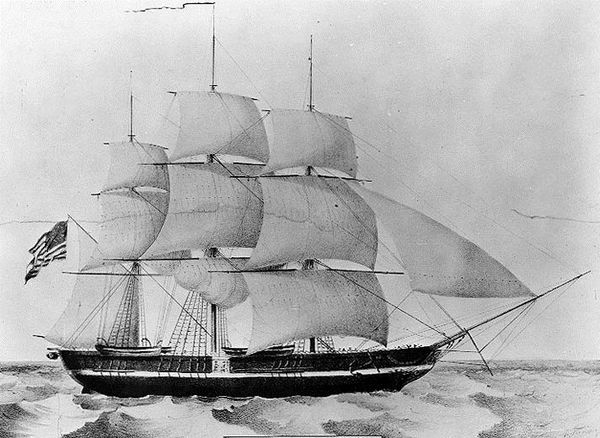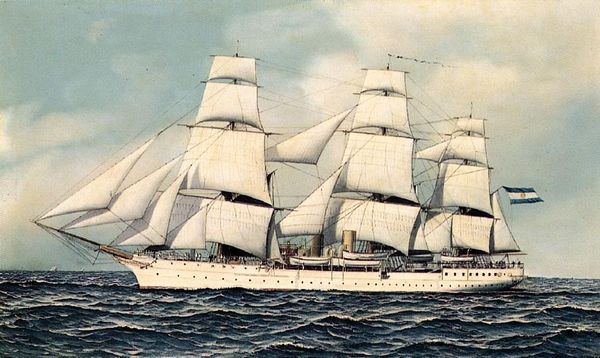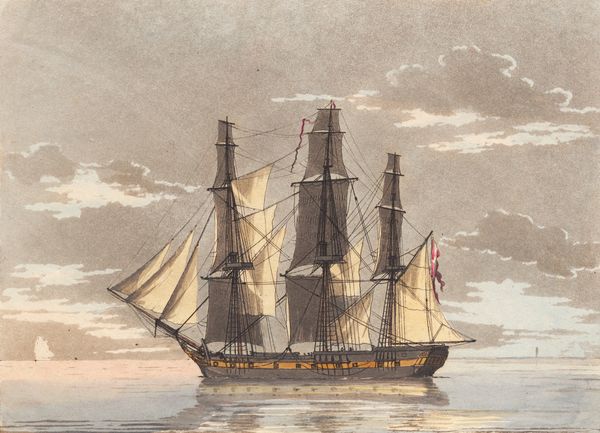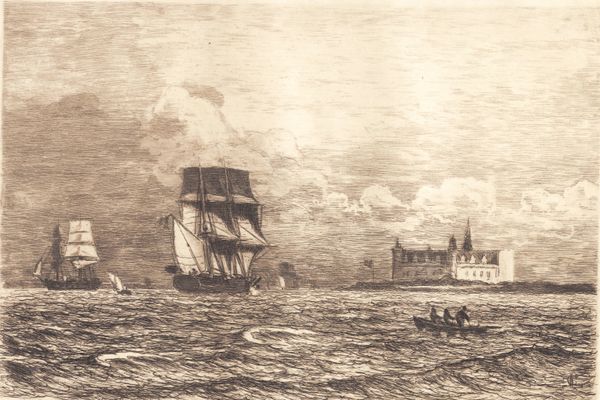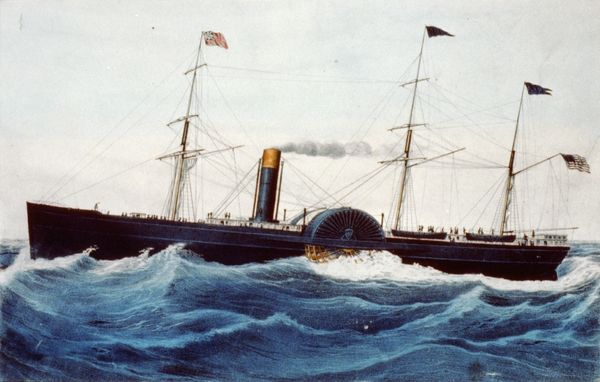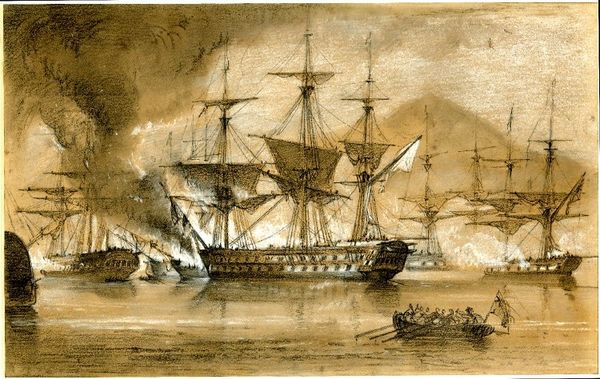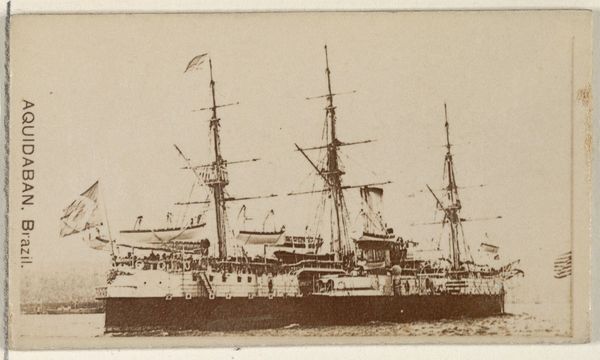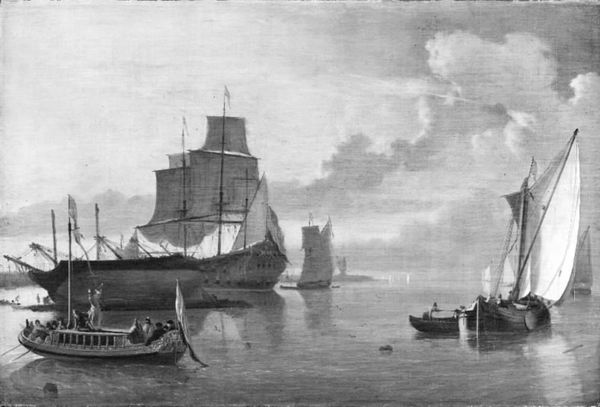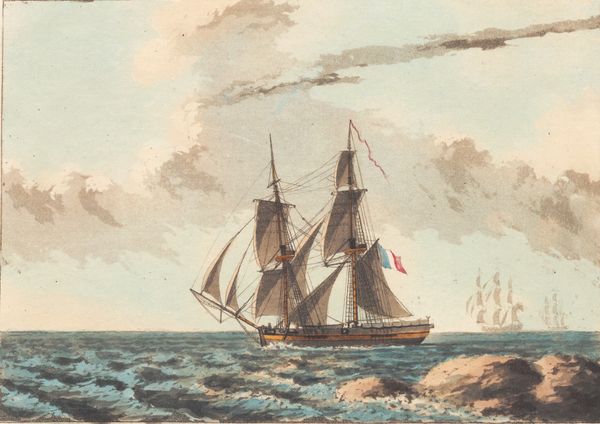
drawing, print, engraving
#
drawing
#
ship
# print
#
landscape
#
vehicle
#
landscape
#
line
#
engraving
Copyright: Public domain
Editor: So, this is Édouard Riou's "Sailing Ship of Messageries Maritimes," from 1889, a drawing turned into a print. The detail is really impressive, and it definitely gives a sense of the vastness of the ocean. What stands out to you as you look at this work? Curator: It's fascinating how the ship is dwarfed by the sublime mountain in the background. The ship, representing human ingenuity and ambition, is juxtaposed against this powerful natural symbol. The sea itself, rendered through meticulously engraved lines, carries a multitude of meanings. Consider: in 1889, what did the sea represent to people in Western Europe? Editor: Exploration? Travel? I suppose connection, but also separation… Curator: Precisely. Ships, during this period, were more than just vehicles; they were potent symbols of connection across empires, and economic power. But observe how the artist places the vessel in relation to the immensity of nature: this speaks to the humbling, often perilous, endeavor of global trade and colonial reach. What kind of psychological impact could this contrast create for viewers then, do you think? Editor: Maybe a sense of awe mixed with the reality of human limitations? Like, we can build these incredible ships, but we’re still at the mercy of nature’s scale? Curator: Indeed. Also note the mountain's association with the eternal, which further amplifies that fleetingness. Riou cleverly utilizes visual vocabulary to explore the cultural psyche of the late 19th century. Editor: I see it now. The image becomes a symbol itself, for broader themes about humanity's place in the world. I wouldn't have picked that up at first glance. Curator: Visual culture works in subtle but powerful ways. Hopefully we can see it a bit clearer through understanding art historical and iconographic context.
Comments
No comments
Be the first to comment and join the conversation on the ultimate creative platform.


